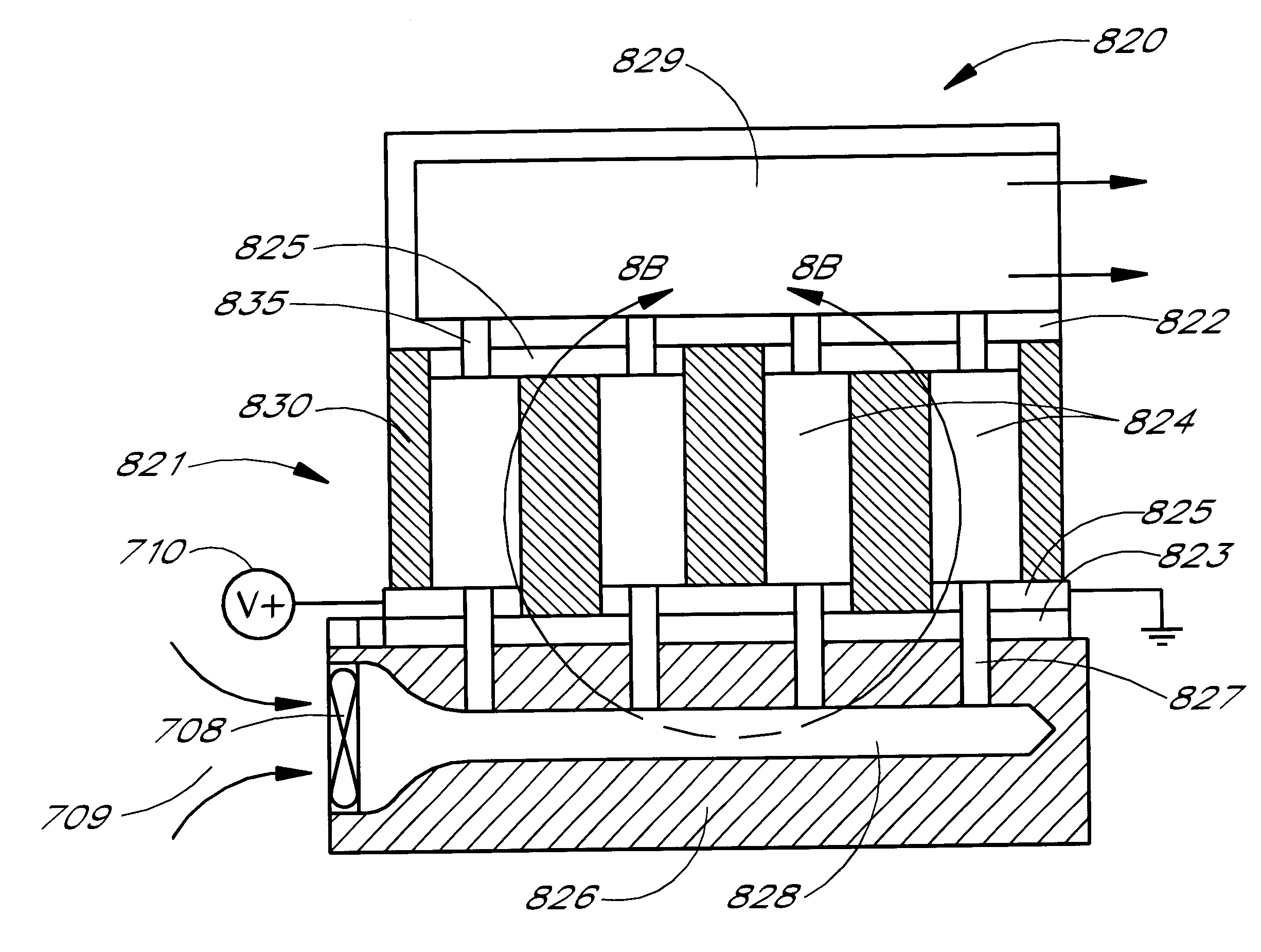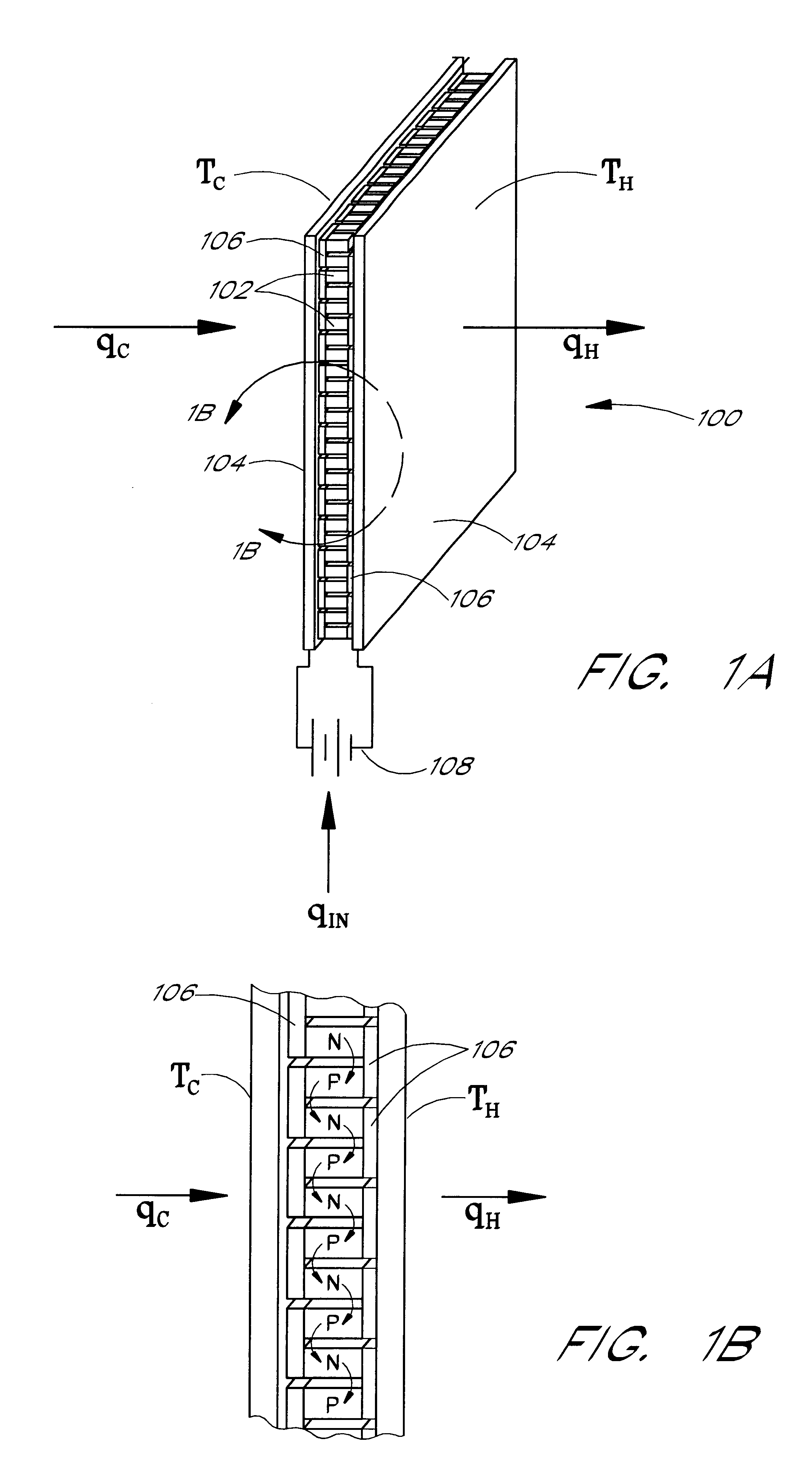Efficiency thermoelectrics utilizing convective heat flow
a heat flow and thermoelectric technology, applied in the field of improved thermoelectrics, can solve the problems of low system efficiency, low efficiency, and low efficiency of tes, and achieve the effect of outweighing the low efficiency of other qualities of tes
- Summary
- Abstract
- Description
- Claims
- Application Information
AI Technical Summary
Problems solved by technology
Method used
Image
Examples
Embodiment Construction
The invention is introduced using examples and particular embodiments for descriptive purposes. A variety of examples are presented to illustrate how various configurations can be employed to achieve the desired improvements. In accordance with the present invention, the particular embodiments are only illustrative and not intended in any way to restrict the inventions presented. In addition, it should be understood that the terms cooling side, heating side, cold side, hot side, cooler side and hotter side and the like do not indicate any particular temperature, but are relative terms. For example, the "hot," "heating" or "hotter" side of a thermoelectric element or array may be at ambient temperature, with the "cold," "cooling" or "cooler" side at a cooler temperature than ambient. Conversely, the "cold," "cooling" or "cooler" side may be at ambient with the "hot," "heating" or "hotter" side at a higher temperature than ambient. Thus, the terms are relative to each other to indicat...
PUM
 Login to View More
Login to View More Abstract
Description
Claims
Application Information
 Login to View More
Login to View More - R&D
- Intellectual Property
- Life Sciences
- Materials
- Tech Scout
- Unparalleled Data Quality
- Higher Quality Content
- 60% Fewer Hallucinations
Browse by: Latest US Patents, China's latest patents, Technical Efficacy Thesaurus, Application Domain, Technology Topic, Popular Technical Reports.
© 2025 PatSnap. All rights reserved.Legal|Privacy policy|Modern Slavery Act Transparency Statement|Sitemap|About US| Contact US: help@patsnap.com



